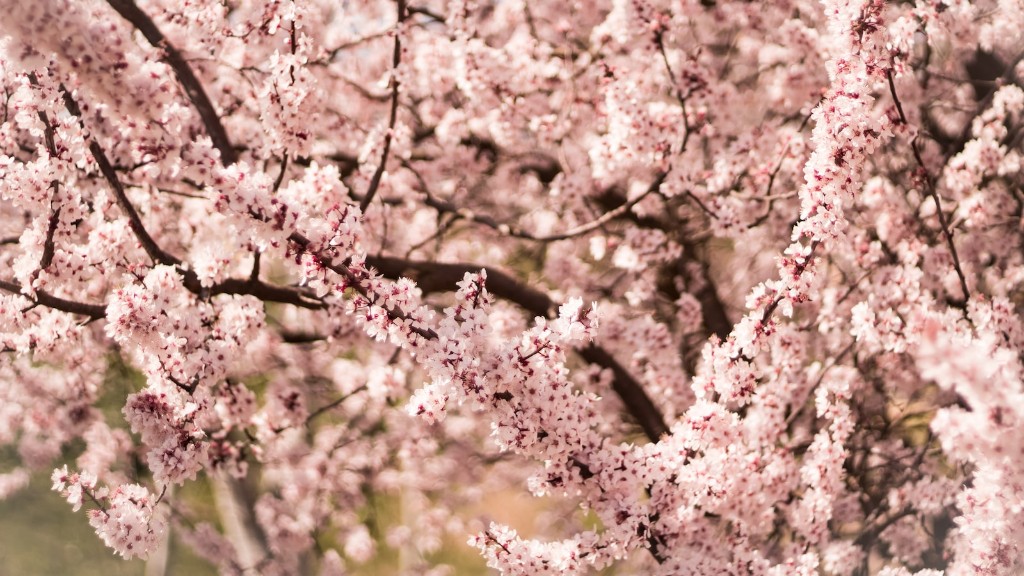Fertilizing Fan Palm Trees
Fan palms, also known as a Chamaerops humilis, are slow-growing but relatively low-maintenance trees. They usually develop distinctive fan-shaped fronds that make them a very attractive addition to landscaping. But to make sure they look their best and are healthy, it’s important to know how to care for fan palm trees properly. Proper fertilization is one of the most important elements of caring for a fan palm tree.
Most types of fan palms need to be fertilized two or three times over the course of the year. It is important to use a fertilizer specifically formulated for fan palms, as these plants are relatively slow-growing and require specific nutrients for optimal health. In general, the fertilizer should have more nitrogen and phosphorus than potassium, as these elements help in the growth of leaves and flowers.
When applying fertilizer to fan palm trees, it is important to spread evenly. If the fertilizer is applied too heavily, it can burn the foliage. It is equally important to ensure that the fertilizer is not washed away by excess rain or water. If this happens, the fertilizer is not absorbed as effectively by the plant and it will not receive the nutrients it needs.
Watering Fan Palm Trees
Watering fan palm trees is essential, as they generally require a certain amount of moisture to stay healthy. When it comes to watering fan palm trees, the amount of water they need depends on the type of climate in which the tree is located. For example, in warmer climates with lots of sun, fan palms need to be watered more frequently. In cooler climates with inadequate sunlight or humidity, the tree will need to be watered less often.
In general, fan palm trees need to be watered deeply but infrequently. Most types of fan palms will benefit from deep, infrequent watering to encourage the development of deep roots. When watering is done too frequently and the soil does not dry out, the roots may become shallow and the tree may become weak or even die.
Pruning Fan Palm Trees
Pruning is an important element of fan palm tree care. Pruning fan palms should be done twice each year, either in late spring or early summer and again in late autumn, to encourage new growth and to prevent the branches from getting too long.
When pruning fan palms, it is best to use sharp, clean pruning clippers and to make sure to remove any dead or discolored branches. It is also important to cut the branches all the way back to their attachments and not to leave any shoots or stubs, as this could encourage disease. When pruning, it is also important to maintain a natural shape, as pruning fan palms too severely could damage the shape of the tree and cause it to become unattractive.
Disease Prevention
Like any tree, fan palms are vulnerable to certain diseases and pests. To prevent diseases, it is important to keep the tree healthy and well-fed by fertilizing it properly and providing it with plenty of water. Mulching around the tree can also help to keep it healthy by controlling the soil temperature, controlling weed growth, and conserving moisture.
It is also important to maintain the pH level in the soil, as fan palms prefer acidic soils. To ensure this, it is important to keep an eye on the soil’s pH levels and to adjust accordingly if needed. It is also important to look out for any signs of pests or diseases, such as brown patches or discolored leaves, and to take action if necessary.
Light and Temperature Requirements
When it comes to the light and temperature requirements of fan palms, they are suitable for most climates and light levels. Fan palms generally prefer bright, indirect sunlight but can also thrive in partial shade. They can tolerate temperatures as low as -7°C, but any temperatures outside their range should be avoided.
If temperatures dip below -7°C, it is important to provide additional heat and protect the tree from cold winds to ensure its health. In warmer climates, it is important to provide enough shade to protect the tree from excessive heat and direct sunlight.
Transplanting and Potting
If you have purchased a young fan palm tree, chances are it will need to be transplanted or potted. It is important to transplant or pot the tree as soon as possible, as fan palms do not do well when their roots are restricted over a long period of time.
When transplanting a fan palm tree, it is important to choose a location in full sun and to use the same type of soil that was in its original pot or nursery container. It is also important to add compost or manure to enrich the soil and to provide nutrients to the tree.
When transplanting, it is also important to gently water the tree and to keep it well-watered for the first few weeks to help with the transplantation process.
Pests, Diseases, and Treatments
Fan palms are generally not susceptible to many diseases and pests, but it is important to be aware of the different pests and diseases that may affect them and to know how to treat them. Common pests include mealy bugs, scale, and spider mites. The best way to treat these pests is to use an insecticidal soap.
Common diseases include root rot, leaf spot, and anthracnose. The best way to treat these diseases is to use an appropriate fungicide and to use good cultural practices such as proper fertilization and pruning.
Supporting the Tree’s Root System
When it comes to fan palm trees, their root systems need special attention to ensure their health. It is important to avoid compacting or disturbing the soil around the roots and to ensure that they are not dried out or overwatered.
When planting a fan palm tree, it is important to dig the hole wide enough to accommodate the root system without any compaction and to fill the holes with a mix of compost and soil. It is also important to add mulch to the area to keep the soil cool and moist. Additionally, it is important to remove any weeds that may be encroaching on the root zone as this can compete for water and nutrients and weaken the tree.
Litter and Removal of Dead Leaves
Another important element of fan palm tree care is to remove any dead leaves or fronds from the tree regularly. This helps promote the growth of new fronds and helps prevent pests from taking hold.
It is also important to keep the area around the tree free of debris. This helps to keep the soil aerated and prevents the roots from becoming damaged by debris. Additionally, this helps keep pests and diseases away and helps to keep the tree healthy.
Dealing With Pest Infestations
Pest infestations are common when it comes to fan palm trees, as these trees are particularly vulnerable to pests. In most cases, it is best to use a spray specifically formulated for use on fan palm trees to treat any pests.
It is important to spray evenly and to make sure to spray the underside of the fronds, as this is where pests are most likely to hide. It is also important to make sure to spray the entire circumference of the trunk to prevent pests and diseases from attacking the roots.
Preparing for Winter
In some climates, fan palm trees will need to be prepared for the winter. If the temperatures dip below -7°C, it is important to provide the tree with extra heat, protect it from cold winds, and provide adequate insulation. Additionally, it is important to mulch around the tree to keep the soil temperature consistent and to prevent the roots from getting too cold.
Furthermore, it is important to provide additional water during the winter as the soil can dry out more quickly due to cold temperatures and winds. Overall, by providing your fan palm tree with extra attention and care during the winter, you can help ensure that it survives and thrives in the colder months.

